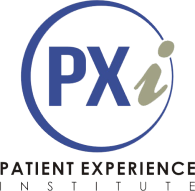Abstract
The objective of this paper was to understand the variables of patient experience by analyzing recent and relevant evidence and to identify design solutions within the hospital environment that positively impact those variables. A systematic review of literature published from 2008-present was conducted to identify variables that contribute to patient experience benefits. Identified variables were documented and categorized into a design, organizational, and outcome variable matrix. Interviews were conducted with professionals from healthcare institutions, architecture firms and organizations committed to improving the patient experience. Data from healthcare facilities, with high patient experience scores, was also examined to derive effective design solutions. The results showed patient engagement, satisfaction - patient and staff, clinical effectiveness, personalization, patient safety and, admission and discharge process were the variables that demonstrated a strong correlation with patient experience benefits. Analysis of the variables resulted in a range of design solutions, such as private and public interaction spaces, decentralized care models, designated staff areas etc. that could potentially improve the outcomes associated with each variable. This study illustrates that aspects of patient experience adopted before, during, and after the delivery of care have the ability to affect adherence, communication, and ultimately the relationship with the patient. It also shows that design of the physical space has a significant impact on the model of care and the overall experience of the patient and family.
Recommended Citation
Jha D, Frye AK, Schlimgen J. Evaluating variables of patient experience and the correlation with design. Patient Experience Journal. 2017; 4(1):33-45. doi: 10.35680/2372-0247.1176.
Creative Commons License

This work is licensed under a Creative Commons Attribution-Noncommercial-No Derivative Works 4.0 License.
Included in
Environmental Design Commons, Environmental Studies Commons, Health and Medical Administration Commons, Health Policy Commons, Health Services Administration Commons, Health Services Research Commons, Interior Architecture Commons, Medicine and Health Commons, Other Architecture Commons


